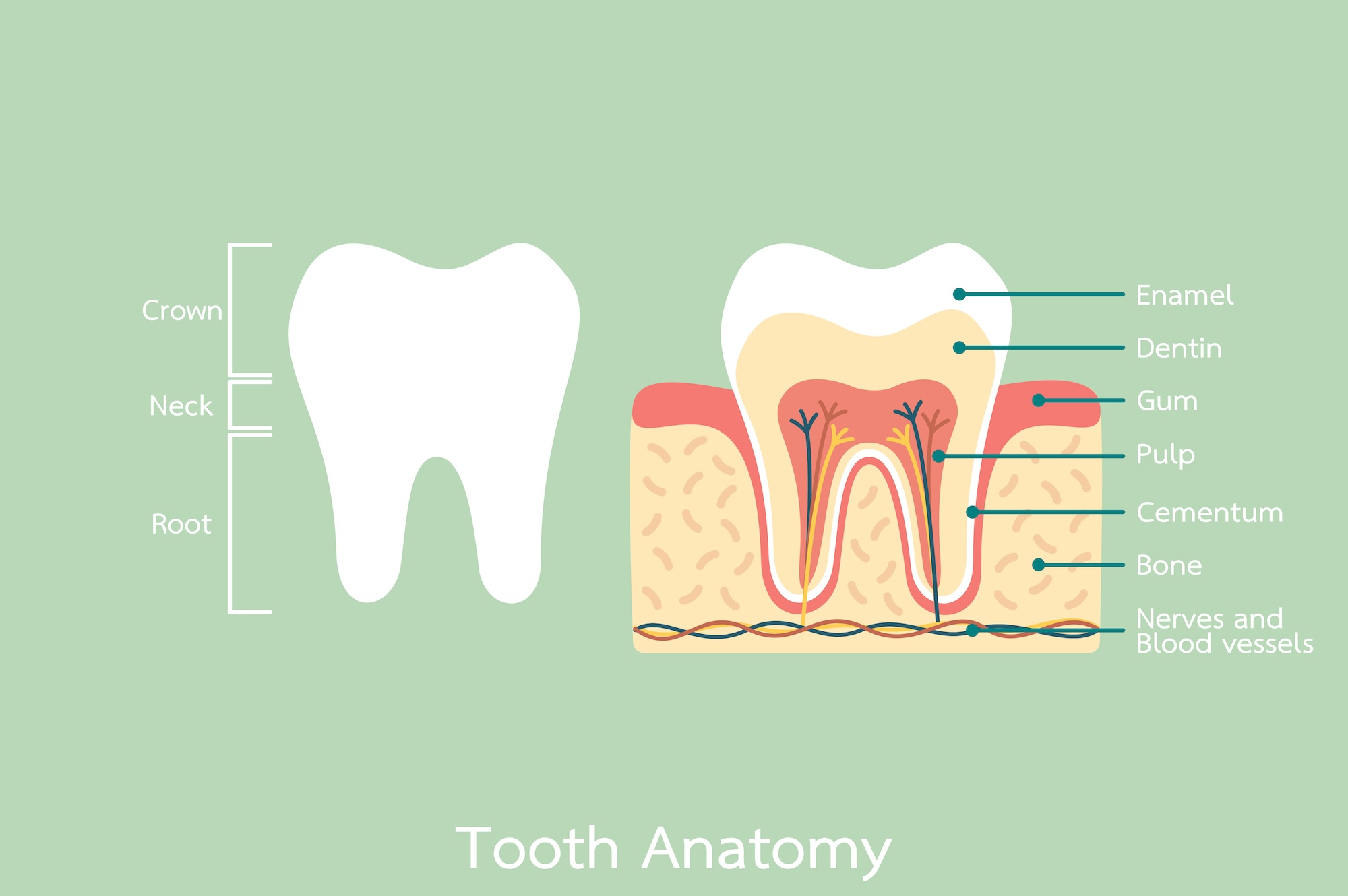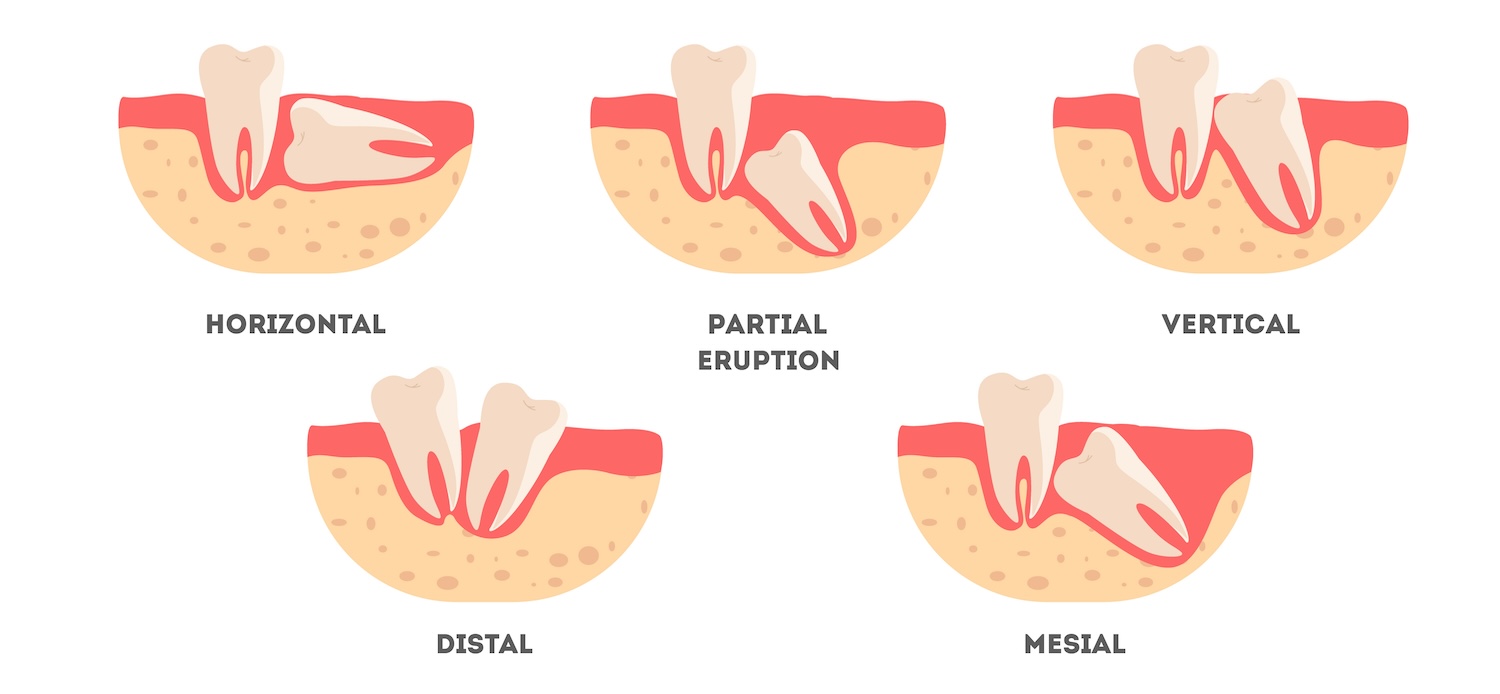Ever wonder what’s really going on inside your mouth? Understanding a little bit about dental anatomy can help you take better care of your teeth and gums—and it’s pretty fascinating, too! From the different types of teeth and their jobs to what’s beneath the surface (like roots, nerves, and enamel), we’re here to break it down in a way that’s simple and helpful for the whole family. Whether you’re brushing up on your own knowledge or helping your kids learn more about their smiles, this is a great place to start!

Crown – The crown is the part of your tooth you can see above the gum line. It’s what you use to chew, bite, and smile. Crowns are covered with enamel, the hardest substance in your body!
Neck – The neck of the tooth is the area right where the crown meets the gum line. It acts like a little bridge between the visible part of your tooth (the crown) and the hidden part (the root).
Root – The root is the part of your tooth that’s below the gum line. It anchors your tooth firmly into the jawbone and helps keep it stable when you chew or talk.
Enamel – Enamel is the strong, shiny outer layer that protects the crown of your tooth. It’s super tough, but it can wear down over time if not cared for—so brushing and flossing are key!
Dentin – Dentin is the layer underneath the enamel. It’s not as hard as enamel and can be sensitive if it’s exposed due to cavities or enamel wear.
Gum – Your gums are the soft tissue that surrounds and protects the roots of your teeth. Healthy gums are pink and firm and help keep your smile in tip-top shape.
Pulp – The pulp is the soft center of your tooth. It contains nerves and blood vessels that help nourish the tooth and keep it healthy.
Cementum – Cementum is a thin layer that covers the root of your tooth and helps it stay attached to the jawbone through tiny fibers.
Bone – Your jawbone holds all your teeth in place and provides support when you chew and speak. Keeping your teeth and gums healthy also helps keep your jawbone strong.
Nerves & Blood Vessels – Found in the pulp, nerves help you feel sensations like hot or cold, while blood vessels provide nutrients to keep your tooth alive and well.

Teeth don’t always grow in perfectly straight—and when they don’t, it can lead to discomfort, crowding, or even problems with chewing and speaking. Some teeth, especially wisdom teeth, may grow in at unusual angles. For example, horizontal impaction happens when a tooth grows sideways, pushing against neighboring teeth instead of coming up vertically. Partial eruption means the tooth has only come partway through the gums, often leaving it more prone to infection or discomfort. A vertical impaction occurs when the tooth is upright but doesn’t fully break through the gum line. Then there’s distal impaction, where the tooth tilts backward toward the rear of the mouth, and mesial impaction, where it leans forward toward the front of the mouth. These growth patterns can sometimes go unnoticed at first, but they may cause pain, swelling, or alignment issues over time. That’s why regular dental checkups and X-rays are important—to catch and address these issues before they turn into bigger problems.

Tooth decay doesn’t happen overnight—it’s a gradual process that can be stopped or slowed down if caught early. It all starts with a healthy tooth, which has strong enamel protecting the inner layers. If plaque and bacteria build up, they can begin to eat away at the enamel, leading to decay in the enamel. At this stage, you might not feel anything, but a dentist can spot the early damage. If left untreated, the decay moves deeper into the tooth, reaching the softer layer beneath called dentin. This can cause sensitivity to hot, cold, or sweet foods. As the decay progresses, it can reach the pulp, which is where the nerves and blood vessels live. This stage is usually painful and may cause swelling or infection. If decay continues unchecked, the tooth can become severely damaged or infected, eventually leading to a dead tooth—meaning the pulp is no longer alive. At this point, the tooth may need to be removed or treated with a root canal to prevent the infection from spreading. The good news? Regular dental visits and good brushing and flossing habits can catch decay early and keep your smile healthy for years to come!
Get started on your path to a healthier and brighter smile.